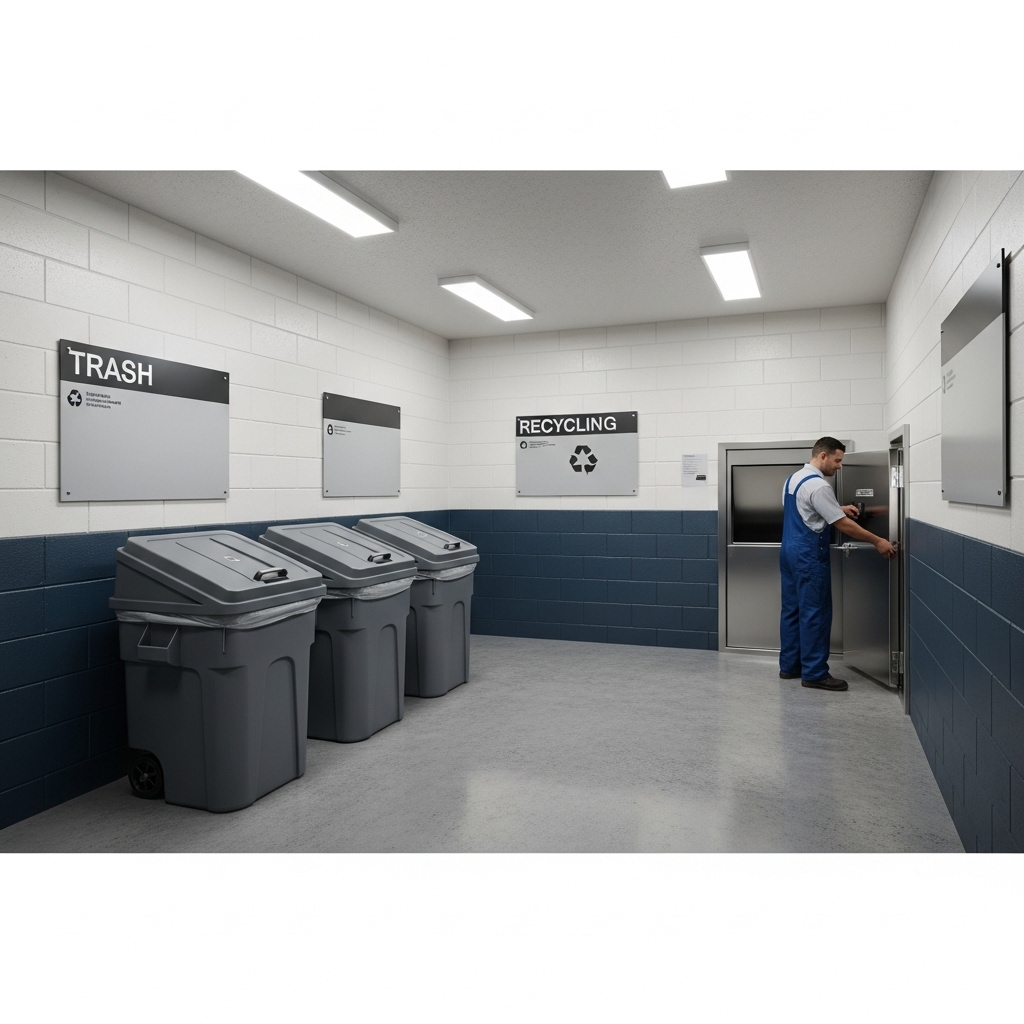Understanding Rodent Sanitation in Los Angeles Rentals
Rental living in Los Angeles is as diverse as the city itself—sunny courtyard apartments in West LA, hillside duplexes with sweeping views, bungalow courts in Hollywood, and renovated lofts downtown. Each layout comes with its own strengths and vulnerabilities, and that variety shapes how rodent sanitation plays out day to day. When multiple households share walls, common areas, and trash rooms, sanitation becomes a shared responsibility and a shared benefit. The better the building’s daily habits, the fewer opportunities rodents have to feed, nest, and travel unseen.
At the core of effective sanitation is the simple idea that conditions drive behavior. If garbage rooms are tidy, chutes are maintained, and recycling is rinsed, it’s much harder for rodents to find consistent calories. Inside units, sealed food storage and regular wipe-downs cut the reward for nightly exploration. Meanwhile, building staff who monitor basements, crawl spaces, and roof access points can spot small openings before they evolve into building-wide pathways. When these pieces work together, residents notice fewer late-night scurries and fewer mysterious noises in the ceiling.
Common Trouble Spots in Multi-Unit Buildings
Trash rooms and chutes are the first hotspots. When bags tear, liquids drip, and bins overflow, rodents have a buffet that’s replenished daily. The solution starts with simple discipline: lidded bins that close reliably, clear signage, and regular wipe-downs of chute doors and floors. In older buildings, chute doors may not close completely; routine maintenance and seals make a surprising difference. The quieter, cleaner, and drier these rooms are, the less they function as staging areas for pests.
Laundry rooms are another often-overlooked area. Loose lint, standing water in drip pans, and forgotten snacks create a trifecta of nesting material, moisture, and food. Weekly attention to these spaces, plus ensuring dryer vents terminate outdoors, preserves air quality and curbs exploration. Similarly, basement storage areas filled with cardboard or fabric suitcases can become soft, warm nesting zones. Converting to sealed bins, elevating items off floors, and maintaining a clear border along walls expose evidence quickly and deter settling.
Kitchens, Pet Areas, and Inside-Unit Habits
Inside units, kitchens and pet areas anchor sanitation. LA renters love to cook and often entertain at home, especially in neighborhoods where dining out is busy or expensive. The result is plenty of food handling, leftovers, and packaging—exactly the variables rodents exploit. The strongest habit is also the simplest: store everything edible in sealed containers, wipe surfaces nightly, and avoid leaving food or dirty dishes out while you sleep. With pet care, bring bowls in at night, and keep kibble in airtight containers rather than open bags in closets or on patios.
Because many rentals have compact kitchens, spilled grains or flour can hide in tight corners and under appliances. A monthly pull-out cleaning of the stove and fridge helps reveal signs early. Keep an eye on under-sink cabinets where pipes penetrate; a small gap can be a highway if not sealed. While sealing may be a management task, residents can still report gaps and keep the area clean so that any fresh activity is visible to maintenance staff responding to a work order.
Building Exteriors and Shared Landscapes
Shared courtyards, alley-adjacent fences, and lush landscaping define the LA rental experience, but they also increase travel routes. Rodents use fence tops, utility conduits, and dense hedges to move between buildings. Landscaping crews can support sanitation by trimming vegetation away from walls, clearing fallen fruit, and ensuring irrigation doesn’t oversaturate soil along foundations. Moisture plus cover is an open invitation; reduce both, and exterior pressure drops dramatically.
Exterior storage closets on balconies and patios deserve special attention. They often hold cardboard, fabric, and camping or beach supplies that smell like food. Give these spaces a seasonal reset: swap cardboard for sealed bins, remove soft nesting materials, and keep the floor visible. When residents maintain tidy balconies and patios, it removes stepping-stone habitats that rodents might use to approach rooflines or balcony doors.
Roles and Responsibilities: Residents and Management
Sanitation works best when responsibilities are clear. Residents control food, clutter, and cleanliness inside their units. Property managers maintain trash rooms, chutes, storage areas, and building envelopes, and they coordinate exclusion work when gaps or screening issues are identified. Open, respectful communication is the bridge. When residents report sightings promptly and managers respond with clear timelines and actions, small problems don’t smolder into building-wide issues.
Move-ins and move-outs are pivotal moments. Packing materials and open doors create unusual amounts of debris and access. Managers who schedule extra trash pickup or additional cleaning during turnover weeks prevent temporary conditions from becoming long-term attractions. Similarly, a quick post-move sweep of corridors and stairwells removes snack wrappers and cardboard scraps that might otherwise linger.
Attics, Crawl Spaces, and Mechanical Rooms
In older LA rentals, attics and crawl spaces often string together multiple units. If rodents establish in these shared spaces, they can travel along mechanical lines and pop into different areas of the building. Routine inspections are invaluable. Look for droppings, rub marks, and insulation disturbances—signs that point to entry points along eaves, vents, or utility penetrations. Where contamination is found, prioritize safe removal and sanitizing before replacing insulation or adding storage shelves. With a clean slate, it’s easier to confirm that sealing efforts are working and to catch any new activity quickly.
Mechanical rooms deserve equal care. These spaces have warmth, vibration, and sometimes small amounts of condensation that attract rodents. Keeping floors clear, sealing gaps around pipe and conduit penetrations, and maintaining tight doors help keep these rooms from becoming transit hubs. Sanitation here is simply about removing comfort and cover so that maintenance teams can see a problem coming, not just respond after the fact.
Communication and Education
Rental communities thrive when people share knowledge. Simple building memos that highlight seasonal sanitation tips—like harvesting fruit in late summer, or securing lids before forecasted winds—help everyone stay on the same page. Many residents are new to LA or new to multifamily living; offering a quick orientation on trash rooms, recycling procedures, and maintenance contacts sets expectations and builds cooperation. The best programs feel supportive rather than punitive, encouraging pride in shared spaces.
If your building contracts professional services, look for an integrated program that respects both residents and staff. The most effective providers emphasize safe cleanup, source removal, and entry-proofing, rather than relying solely on short-term measures. A thoughtful plan connects inside-unit habits to building-wide maintenance and ensures that what residents do to keep homes clean is amplified by what management does behind the scenes—a hallmark of successful rodent sanitation at scale.
Frequent Friction Points and Practical Fixes
Overflowing bins after holidays, late-night moves, or building events are notorious for attracting pests. Pre-scheduling extra pickups around these times takes pressure off trash rooms. Another friction point is bulky item storage. Old mattresses or furniture left in garages or behind buildings create hidden spaces where rodents feel safe. Clear, posted procedures for bulky item pickup solve both a sanitation and a community relations problem, keeping common areas pleasant and pest-resistant.
Pet waste in courtyards or planters is another issue that creeps up. Providing bags, clear signage, and routine staff sweeps reduce temptation for rodents to investigate planters, especially in drought years when moisture and organic matter are scarce. Small, consistent measures like these transform the feel of a property and lower the baseline pressure from surrounding neighborhoods.
Frequently Asked Questions
Who is responsible for sealing entry points in a rental? Typically, building management or the property owner handles structural exclusion, while residents handle cleanliness inside their units. Clear communication helps align efforts so sanitation inside supports sealing work outside and in common spaces.
How can I tell if activity in my unit is migrating from a common area? Repeated signs near utility lines, around under-sink penetrations, or in ceilings can suggest movement along building infrastructure. Report patterns to management so inspections can focus on shared spaces that link units.
Are trash chutes worth keeping if they cause problems? Yes, when maintained. Chutes reduce hallway trash and can be sanitary if doors close fully, rooms stay clean and dry, and bins are emptied on schedule. Maintenance is the deciding factor.
What’s the best way to manage pet food in a small apartment? Use airtight containers and feed pets on a schedule. Pick up bowls at night and wipe the area so that no residue signals a snack stop to nocturnal visitors.
How often should management inspect attics or crawl spaces? Seasonal inspections paired with after-event checks—following heavy rain or nearby construction—catch shifts in activity early. Documentation helps teams track what works and where to focus next.
What should I do if I notice droppings? Clean the area safely, note the date and location, and tell management. Fresh signs concentrated in one area often point to an entry point or habit that can be addressed quickly with coordinated action.
Do scented deterrents or ultrasonic devices solve the problem? They may have limited, temporary effects, but they do not replace sanitation and exclusion. Focus on removing food rewards and closing access; gadgets can’t do that work for you.
How can residents and staff stay aligned over time? Regular reminders, visible results, and a simple reporting process build momentum. When people see cleaner spaces and fewer incidents, participation increases and the building develops a culture that supports long-term cleanliness.
When you’re ready to turn a good program into a great one, connect building routines with best practices in rodent sanitation. With residents and management rowing in the same direction, LA rentals can be both vibrant and clean, proving that shared walls don’t have to mean shared pests.

